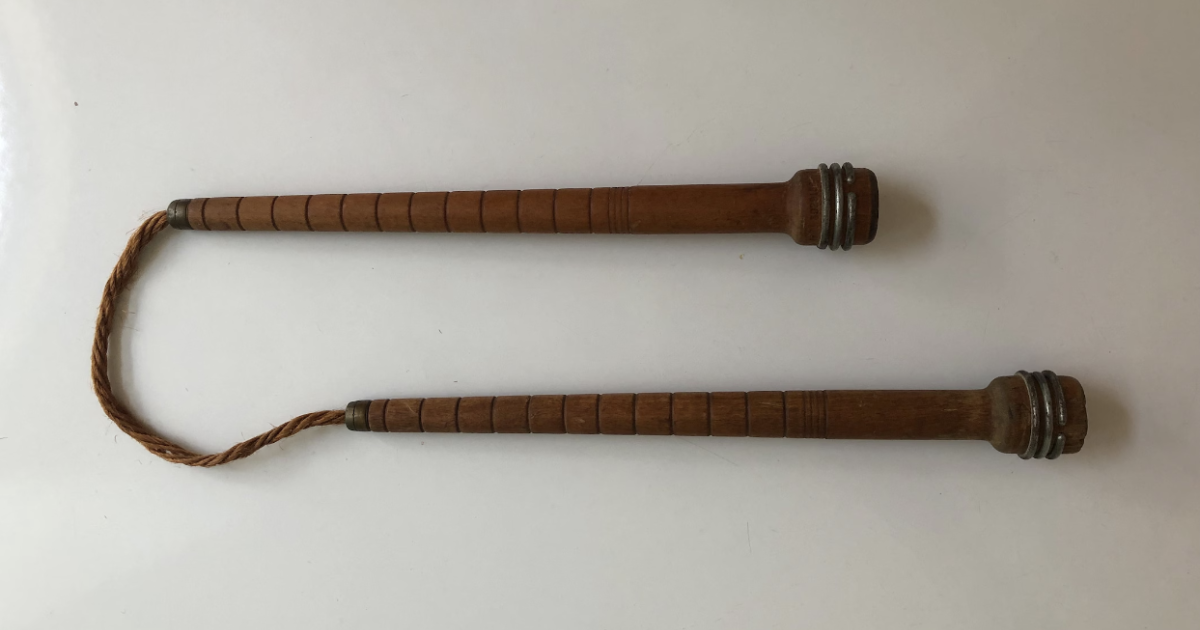Can You Guess the Hidden Purpose Behind These Enigmatic Antiques?

Source: Etsy
Textile bobbins are essentially spools or cylinders onto which thread or yarn is wound after being spun on a spinning wheel or industrial spinner. The construction of these bobbins—with metal accents and a reflective stripe—suggests that they could have been used in a more industrial setting, where the durability of the bobbin and the visibility of the yarn or thread were important.
These bobbins are typically made from wood for its durability and the ease with which it can be turned and shaped on a lathe. The metal accents likely served to reinforce the structure and perhaps to guide the thread or yarn as it was wound.

The jute string connecting the two bobbins could have several purposes:
- Storage: Connecting bobbins together made them easier to store and less likely to be lost or separated. In large textile mills, organization was key, and such a system would help keep pairs of bobbins together.
- Transport: Attached bobbins could be hung on a hook or a rod, making them more portable within a textile mill. Workers could carry several sets at once or hang them near their workstations for ease of access.
- Identification: The jute string could also serve as a method of identification. By tying bobbins together, a worker could mark a set as being part of a particular batch or as containing a specific type of thread or yarn.

In terms of use, bobbins would be placed onto a bobbin rod on a spinning or weaving machine. The thread or yarn would be drawn from the bobbin evenly and without snags, thanks to the smooth surfaces and metal guides. This system ensured that the textiles produced were of consistent quality and free of defects caused by irregular thread tension or supply.
While these objects are no longer used in modern textile production, which has moved on to more efficient and automated processes, vintage textile bobbins like these are often collected for their historical value and beauty. They can also be repurposed into home decor items, such as candlestick holders, or incorporated into artistic installations that pay homage to the textile industry’s rich heritage. The connection via jute string can add to the aesthetic value when these bobbins are displayed in a home or museum setting, providing a visual reminder of their original function and the interconnectedness of the textile production process.
